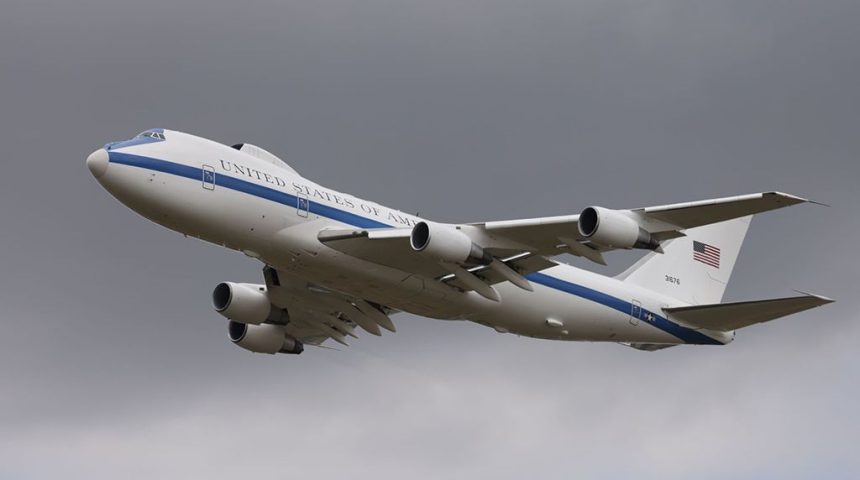Royal International Air Tattoo in the UK, marks the first airshow appearance of a U.S. Air Force E-4B Nightwatch, outside the U.S.
The RIAT (Royal International Air Tattoo), underway at RAF Faiford, UK, is, at least in Europe, the real highlight of the airshow season, attracting, as usual, several interesting aircraft types from all over the world. Making its first appearance at RIAT 22, the first ever at an airshow outside the U.S., is this year a very rare assets, the U.S. Air Force E-4B Nightwatch.
The E-4B is a modified B747-200 that serves as National Airborne Operations Center (NAOC) providing a flying command, control and communications center to direct nuclear (and conventional) forces, by receiving, verifying and relaying EAM (Emergency Action Messages). Four E-4B are in service with the U.S. Air Force and operated by the Air Force Global Strike Command out of Offutt Air Force Base, Nebraska. One aircraft is usually airborne every 12 hours, with another one ready for departure with a 5-minute notice.
The one on static display at RIAT 22, registration 73-1676, arrived in the afternoon on Jul. 15, 2022 as GORDO 01. The aircraft could be tracked online on flight tracking websites as it did a holding pattern and then a low pass before coming back to landing.
GORDO01 (E-4B NAOC) at RIAT 2022 😎 https://t.co/CWje85kJdJ pic.twitter.com/6gMIhbjjeu
— Thenewarea51 (@thenewarea51) July 16, 2022
The E-4B, designed to carry the U.S. SecDef as well as other U.S. top officials and always supporting Air Force One’s trips abroad, is specifically designed to keep American decision makers alive in case of nuclear wars, crisis, zombie invasions or alien attacks. Therefore, it has to be able to fly through any EMP (electromagnetic pulse) with unharmed systems. That’s why this highly-modified Boeing 747 does not feature modern glass cockpit but old fashioned, analogue-style avionics are more resilient to EMPs.
The E-4B is protected against the effects of electromagnetic pulse and has an electrical system designed to support advanced electronics and a wide variety of communications equipment. An advanced satellite communications system provides worldwide communication for senior leaders through the airborne operations center. Other improvements include nuclear and thermal effects shielding, acoustic control, an improved technical control facility and an upgraded air-conditioning system for cooling electrical components.
According to the U.S. Air Force fact sheet, the Nightwatch aircraft’s main deck is divided into six functional areas: a command work area, conference room, briefing room, an operations team work area, communications area and rest area. An E-4B may include seating for up to 112 people, including a joint-service operations team, Air Force flight crew, maintenance and security component, communications team and selected augmentees.
The following clip shows the arrival of the “Doomsday” plane in 4K.









